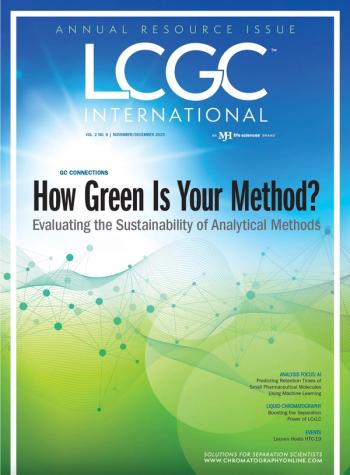
Chromatography at the World Cup
Agilent Technologies has been selected by the South African Doping Control Laboratory as the primary provider of gas-phase testing instruments for the 2010 World Cup. The South Africa Doping Laboratory is equipped with state-of-the-art gas chromatography and mass spectrometry instruments from the company, which will be used to confirm the chemical identity of suspected banned substances found in testing samples.
Agilent Technologies has been selected by the South African Doping Control Laboratory as the primary provider of gas-phase testing instruments for the 2010 World Cup.
The South Africa Doping Laboratory is equipped with state-of-the-art gas chromatography and mass spectrometry instruments from the company, which will be used to confirm the chemical identity of suspected banned substances found in testing samples.
The laboratory is located 250 miles south of Johannesburg in Bloemfontein and will be responsible for all doping testing during the competition.
“Agilent is proud of our leadership role in anti-doping testing instruments, which dates back to the 1970s,” said Mike McMullen, president of the company’s Chemical Analysis Group. “We are honored that the South African Doping Control Laboratory selected Agilent to help ensure a level playing field and fair competition at the 2010 World Cup.”
A third of all players in the World Cup will be tested randomly for drug use. From each of these players 90 mL of urine is collected. This is then split into two portions labelled Sample A and Sample B. Sample A is screened for the banned drugs while Sample B is stored and only used when a banned drug is found in sample A.
Only a small amount of the sample, approximately 2–3 mL, is injected into the GC–MS system, which will separate the compound into its components. The turn-around time is reported to be around 24 hours for the full analysis.
There are currently nine broad classes of prohibited substances including stimulants, such as cocaine, amphetamines and anabolic steroids. According to the company, within these nine categories, there are over 400 substances and thousands of related compounds that can be detected.
In 1972, Agilent supplied analytical instrumentation to the lab serving the first Olympic Games in which testing was required. Since then, the company has played a role with drug-testing labs serving each of the Olympic Games as well as major sporting events such as the World Cup and the Tour de France.
For more information on the company visit
Newsletter
Join the global community of analytical scientists who trust LCGC for insights on the latest techniques, trends, and expert solutions in chromatography.



